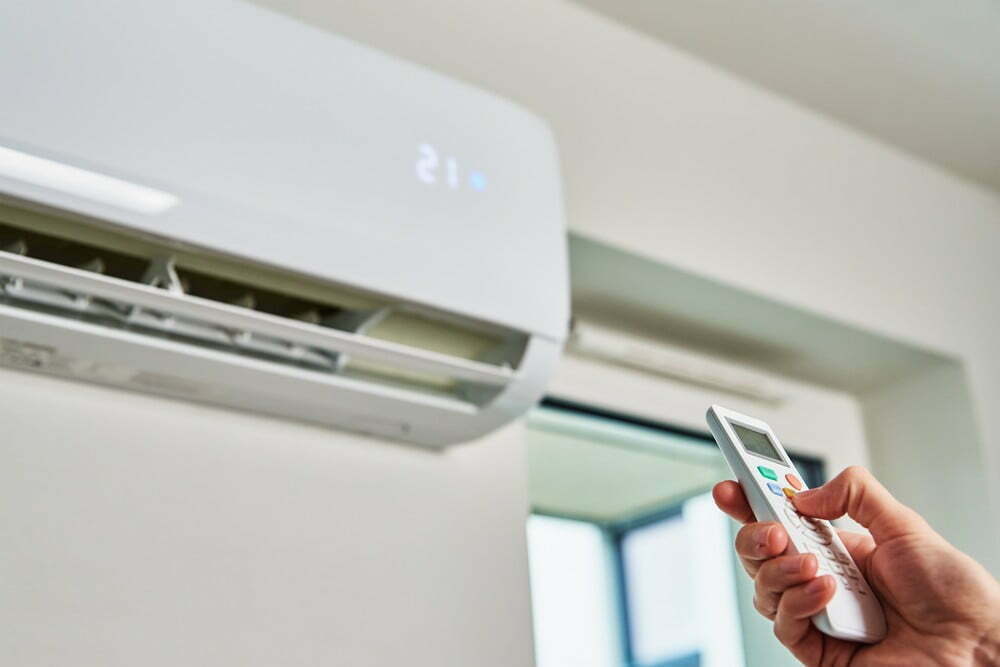The Environmental Impact of Air Conditioner Installation in Canberra

Air conditioners have become an essential part of our lives, providing much-needed relief from the scorching heat. However, it is important to consider the environmental impact of air conditioner installation, especially in regions like Canberra. In this article, we will explore the various aspects of air conditioner installation in Canberra and its implications on the environment. From energy consumption and greenhouse gas emissions to the disposal of old units, we will delve into the key factors that contribute to the environmental footprint of air conditioning systems.
The Environmental Impact of Air Conditioner Installation in Canberra: An Overview
Air conditioner installation has both immediate and long-term consequences for the environment. Let's take a closer look at some of the major environmental impacts associated with air conditioning systems.
Energy Consumption: A Strain on Resources
Air conditioners require a significant amount of energy to operate, leading to increased electricity consumption. In Canberra, where the demand for cooling is high during the hot summer months, this can put a strain on the local power grid. The excessive use of electricity not only depletes valuable natural resources but also contributes to increased greenhouse gas emissions.
Greenhouse Gas Emissions: Impact on Climate Change
The energy used by air conditioners in Canberra is primarily generated through the burning of fossil fuels, such as coal and natural gas. These processes release greenhouse gases, including carbon dioxide (CO2), into the atmosphere. As a result, air conditioner installation indirectly contributes to climate change by exacerbating the greenhouse effect and global warming.
Refrigerants: Potential for Ozone Depletion
Air conditioners rely on refrigerants to cool the air. In the past, certain refrigerants, such as chlorofluorocarbons (CFCs), were commonly used, which had a detrimental impact on the ozone layer. However, regulations have since been implemented to phase out the use of ozone-depleting substances. Nevertheless, it is crucial to ensure that the refrigerants used in air conditioning systems in Canberra are environmentally friendly and comply with international standards.
Electronic Waste: Disposal Challenges
As technology advances, older air conditioning units become obsolete and need to be replaced. This results in electronic waste that requires proper disposal. Improper disposal of old air conditioners can lead to harmful chemicals leaching into the soil and water, posing risks to human health and the environment. Therefore, it is important to promote responsible e-waste management practices to mitigate these potential hazards.
The Importance of Energy Efficiency
As awareness about the environmental impact of air conditioner installation grows, there has been a significant focus on improving energy efficiency in cooling systems. Energy-efficient air conditioners consume less electricity, reducing the strain on the power grid and minimizing greenhouse gas emissions. The Australian government has implemented various energy rating programs, such as the Energy Rating Label and the Minimum Energy Performance Standards (MEPS), to encourage the use of energy-efficient appliances. By choosing air conditioners with higher energy efficiency ratings, residents of Canberra can contribute to the reduction of their carbon footprint while enjoying the comfort of a cool indoor environment. Furthermore, energy-efficient cooling systems can lead to long-term cost savings by reducing electricity bills.
Frequently Asked Questions (FAQs)
Q: How can I reduce the environmental impact of air conditioner installation in Canberra?
There are several ways to reduce the environmental impact of air conditioner installation in Canberra. First, choose an energy-efficient unit with a high energy rating. This will minimize electricity consumption and greenhouse gas emissions. Additionally, consider proper insulation and shading for your home to reduce the need for excessive cooling. Lastly, ensure that your old air conditioner is disposed of responsibly by recycling or donating it to appropriate organizations.
- Q: Are there any government incentives for using energy-efficient air conditioners in Canberra?
Yes, the Australian government offers various incentives and rebate programs to promote the use of energy-efficient appliances, including air conditioners. These programs aim to encourage consumers to choose environmentally friendly options and reduce their energy consumption. Check with local authorities or visit the government's official websites for information on available incentives in Canberra.
- Q: Can regular maintenance of air conditioning units help reduce their environmental impact?
Absolutely! Regular maintenance of air conditioning units is essential for optimizing their efficiency and reducing their environmental impact. Simple tasks like cleaning or replacing filters, checking refrigerant levels, and ensuring proper insulation can significantly improve the performance of your air conditioner, resulting in less energy consumption and lower greenhouse gas emissions.
- Q: Are there alternative cooling solutions that have a lower environmental impact than traditional air conditioners?
Yes, there are alternative cooling solutions that have a lower environmental impact. For example, evaporative coolers use significantly less energy compared to traditional air conditioners. These systems work by evaporating water to cool the air, making them more energy-efficient and environmentally friendly. However, their effectiveness depends on the climate and humidity levels in the area.
- Q: What role can individuals play in minimizing the environmental impact of air conditioner installation?
Individuals can play a crucial role in minimizing the environmental impact of air conditioner installation. By opting for energy-efficient models, practicing responsible usage, and promoting proper e-waste management, individuals can contribute to a sustainable and environmentally friendly cooling system. Additionally, raising awareness about the importance of energy efficiency and encouraging others to make eco-conscious choices can have a positive impact on the environment.
- Q: How can air conditioner manufacturers contribute to reducing the environmental impact?
Air conditioner manufacturers have a responsibility to develop and produce environmentally friendly cooling solutions. They can achieve this by investing in research and development to improve energy efficiency, using eco-friendly refrigerants, and ensuring proper end-of-life management for their products. By adopting sustainable practices throughout the manufacturing process, these companies can significantly reduce the environmental impact of air conditioner installation.
Conclusion
While air conditioners provide much-needed comfort in the hot summer months, it is important to consider their environmental impact. In Canberra, where the demand for cooling is high, air conditioner installation contributes to increased energy consumption, greenhouse gas emissions, and electronic waste. By choosing energy-efficient units, practicing responsible usage, and promoting proper e-waste management, we can minimize the environmental footprint of air conditioning systems. It is crucial for individuals, manufacturers, and policymakers to work together to create a sustainable and eco-friendly cooling future.



